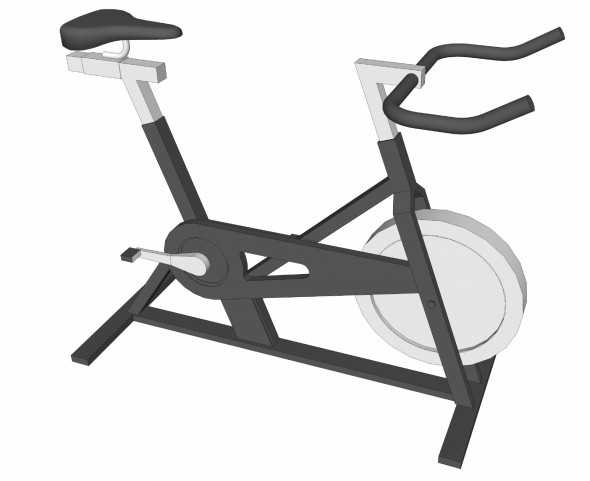

Out of Something, Nothing: My Summer as a Professional Mover, part 2
- Published: February 12, 2016
All questionable elements of my experience aside, let’s start at the most basic level, where moving is something you have to do and a moving company is a group of experts that can help you do it. Here is some background to the enterprise, a little bit about hiring a moving company and what a mover might experience the day he is scheduled to move your house:
Most people avoid thinking about the actual process of moving until it’s absolutely time to do so, and with good reason. A full move is a logistical nightmare. It’s time-consuming and stressful and takes a tremendous physical toll on someone who probably isn’t used to moving all of their possessions in one day, not to mention that it forces you to confront just how much junk you’ve accumulated.
If you have enough money – and hiring a moving company isn’t cheap – getting someone else to do it is the optimal solution. (Of course, the politics of hiring someone to do a service for you is a complex topic unto itself, which for better or worse won’t be addressed here.) One of the best parts about hiring a company is that you don’t even have to be home when the move happens. I found that many homeowners would be gone for the day, off doing something fun. It must have been a good feeling – you can leave for the day and all the annoying work is done when you get home. Vice-versa when you move into a new place – one day the new house is bare, the next day it is filled with all of your stuff, ready for the only fun part of moving: setting up the new place. (It was also good for us when the homeowners were gone. They tend to followed you around to make sure everything is handled with the utmost care, as if a professional mover is unaware that a box of dishes is delicate.)
So you choose a company to move you. You talk on the phone with the office. You set a date. The next step is talking with the company about the contents of your house. A form is filled out that itemizes everything to be moved. A typical list would say something like:

Two people move a piano down a flight of stairs? Sure, why not?
– Two bookcases
– Two twin beds; one king size
– Fifteen boxes
– One set of patio furniture
– One piano
– Six dining room chairs
– etc. etc. etc.
The process is the same whether you move a single appliance or an entire office building. The itemized list is convenient and necessary, as it gives both the company and the client an approximation of the amount of time and equipment needed to make the move happen. In theory it’s a great system but I can almost guarantee the list is inaccurate and will be the subject of contention. You’ve probably forgotten or underestimated a fair amount of the stuff you have to move, but the moving company will treat the list as a definitive account of your possessions, charging for nothing less and happy to charge if more is added unexpectedly. Both sides are right when arguing over the list. It disrupts the company’s schedule when a homeowner neglects to mention that none of his things are packed, and it’s an unpleasant surprise for the homeowner to see how quickly the fees add up even when moving something small.
Despite the likely disagreement, the list is the most logical way to coordinate a move. But it’s also a heartbreaking system for the employees, as it’s rare that you get a written account outlining just how hard your day is going to be, as soon as you get to work. The crew leader has the day’s manifest, and there it is: you see that in addition to the usual tons of household stuff, your move involves a pool table, an armoire, a gun safe, and many pieces of exercise equipment, all likely to be extracted from a basement or an upstairs floor.
(Moving exercise equipment was especially bad because each piece was invariably super heavy and weirdly shaped. The weight was always distributed unevenly and there were usually multiple arms or levers that stuck out and/or moved as you did, making the machines next to impossible to get through halls and doorways without getting caught on or hitting something. The last thing I want to do on a hot summer day is struggle up basement stairs with a heavy, never-used exercise bike whose arms keep getting caught between the railing and the wall. There is a special place in hell reserved for the action of moving stationary bikes.)
Sometimes the entire day requires moving only a few pieces of furniture and sometimes it’s a full packing-loading-driving-unpacking operation at someone’s huge mansion. My third day on the job lasted only three hours, and my longest day was at least sixteen. You wouldn’t know until you got there, and it all depended what list your crew got assigned. If a crew leader looked shocked (or even worse, was showing other crew leaders your list), you knew you were in for a long day.

My enemy, fills me with dread…
Most people would prefer not to work if they didn’t have to. Working is an ineluctably terrible activity, an imposition on your interests, your autonomy, and the chance to derive maximum enjoyment from life by doing what you like. But as a mover, this dreadful necessity didn’t even follow a set schedule.
It appeared that our schedules were made one day at a time, as we only knew if we’d be working the next day when we called the company hotline after 6pm the night before. The manager recorded a list of the people needed – if you were on it, you worked, if you weren’t, you didn’t. I already couldn’t make plans for the evening – you worked until the move was done, no matter long it took – but I also couldn’t ever make plans for the following day or weekend because nobody knew when they’d be needed. Calling the hotline inspired an emotional conflict because I needed the hours but hated the job so much I hoped I wouldn’t be called in. It was like the dubious surprise of a snow day you have to pay the school $75 to enjoy.
Most veteran movers had earned priority scheduling and worked every day. The new, temporary, or bad workers were rotated in and out as needed. I generally worked four to six days a week, which amounted to anywhere from twenty-five to fifty hours. I made something like $7.50/hr. plus tips, which were obviously not guaranteed. Weekly tips were usually at least twenty-five dollars and sometimes a free lunch or two. My single largest tip was $100 (very well deserved, as you’ll find out) but another time the homeowner tipped the crew leader forty bucks and gave me and the other guy a few rumpled singles.
You were obligated to buy a set of three work shirts embroidered with your name if it seemed like you were going to be around for the long haul. Three shirts and one pair of shorts cost about $120, an expense taken out of your paycheck a bit at a time. Fortunately you didn’t have to do this right away. The company had an entire room filled with clothes from dudes who didn’t work there anymore. (The turnover rate was tremendous.) I got one with “Jamal” on it, the apparent incongruity of the name and my face something customers never failed to comment on. For a while, they only gave me one shirt. I’m sure this was accidental, but every day my shirt got more stained and stinky until I finally asked to borrow some more. After a few months there was talk of getting my own shirts. An embroidered name seemed like an accomplishment, though I was only going to be there for the summer and didn’t want to invest in a uniform I’d happily never wear again. I didn’t push the issue and continued to wear gigantic shirts with improbable names, and this arrangement was sustained for the duration of my employment.
If you appeared to be responsible and had a clean driving record, you’d be groomed to be a driver/crew leader. One day the manager said I wasn’t going on a move but would begin the training to become a driver. Great? I wondered. They grabbed another guy and brought him in too, where he continued to eat the bowl of cereal that he prepared every morning at work. His cereal routine was a perpetual source of derision by guys who couldn’t believe that this dude was so comfortably at home that he had his own bowl in the break room cupboard and gallon of milk in the fridge. We filled out some paperwork and then watched five or six hours of those hilarious training videos that only ever seem to have been made in the early 90s. (Haven’t they made any new videos, for any company or type of work, since then?) We were told the second part of the training would take place later that week and were then sent home. I wasn’t sure they picked the right guy to be a driver because I didn’t command any respect at all, and certainly not that of people who’d be there longer than me but were unable to drive for various legal reasons. Maybe the company realized this. After that one day of watching videos, neither of us heard anything more about it.
The Yellow Springs News encourages respectful discussion of this article.
You must login to post a comment.
Don't have a login? Register for a free YSNews.com account.

Parkinsons.jpg)













No comments yet for this article.